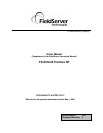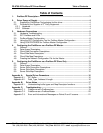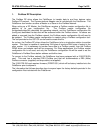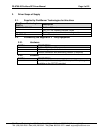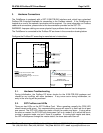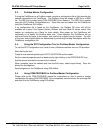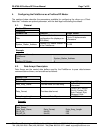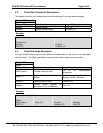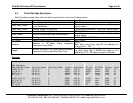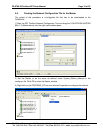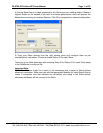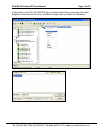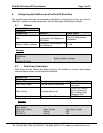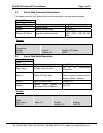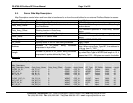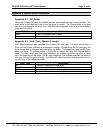
FS-8700-20 Profibus DP Driver Manual Page 6 of 22
FieldServer Technologies 1991 Tarob Court Milpitas, California 95035 USA Web:www.fieldServer.com
Tel: (408) 262-2299 Fax: (408) 262-9042 Toll_Free: 888-509-1970 email: support@fieldServer.com
3.3. Profibus Master Configuration
If using the FieldServer as a Profibus master, provide a configuration file to fully describe the
network connected to the FieldServer. The Profibus driver will accept a 2BF file or a BSS
file. The 2BF file is created using COM PROFIBUS from Siemens. The BSS file is created
using the SST Profibus Configuration tool. These files can be loaded onto the FieldServer
using the FieldServer RUI utilities.
If no configuration file is found on the FieldServer, the Profibus DP driver will still be
available as a slave if the System_Station_Address and local Node ID values match. See
section on configuring as a Slave for more details. After power up, the FieldServer will
continually try to detect the Profibus baud rate. Once detected, the FieldServer will go
online and send its inputs to the master, and receive its outputs from the master. The size
of the input and output buffers are determined by examining the Map Descriptors within the
FieldServer configuration file.
3.4. Using the SST Configuration Tool for Profibus Master Configuration
To use the SST Configuration tool, install it onto a Windows machine from the CD provided.
After starting the tool:
Create a new network specifying the SST 5163-PFB-ISA as the master.
Set the network properties such as baud rate by right clicking on the PROFIBUS-DP icon.
Add the slaves intended to connect to the network.
When complete, save the network and from the Edit menu, select export binary. Save the
binary file as bridge.bss.
Send bridge.bss to the FieldServer using RUI utilities.
3.5. Using COM PROFIBUS for Profibus Master Configuration.
Please refer to the COM PROFIBUS manual for instructions on how to create a master
configuration file using COM PROFIBUS. Once completed, save the binary file as bridge.2bf
and send it to the FieldServer using RUI utilities.



